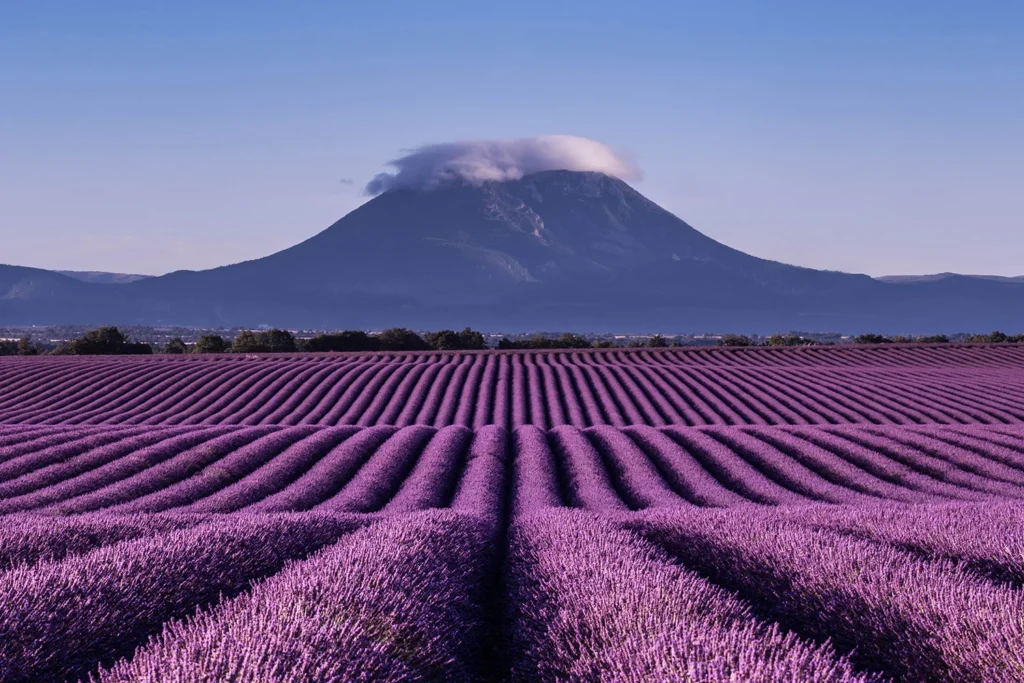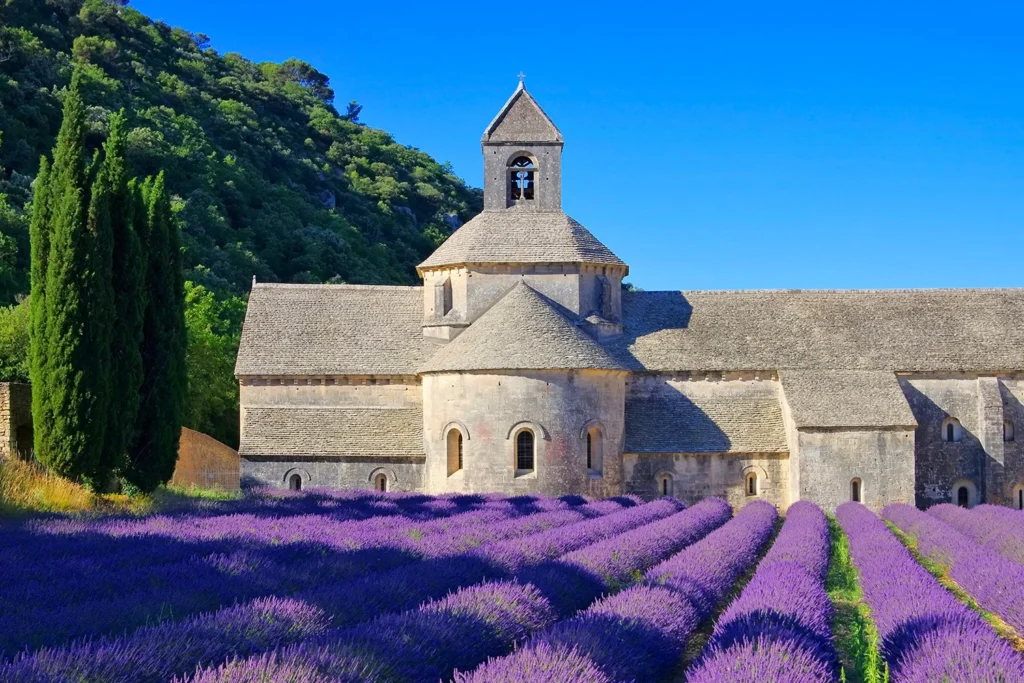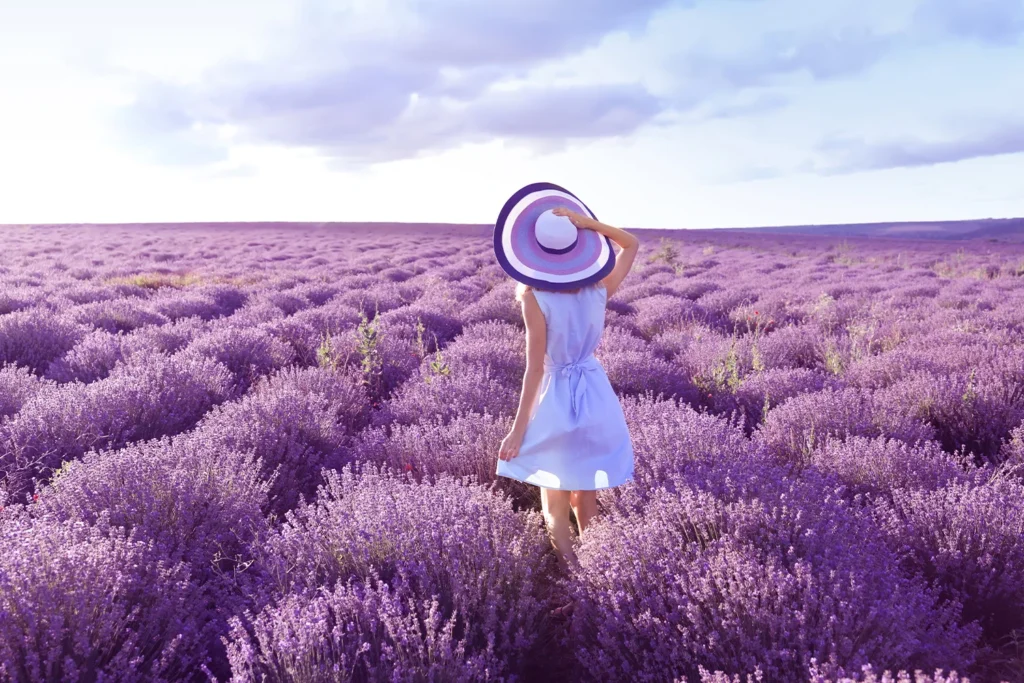Probably nothing is as strongly associated with Provence as the beautiful lavender fields. They are the ultimate symbol of the region and such a stunning sight that they can touch the hearts of even the greatest skeptics.
The blooming lavender fields attract people from various corners of Europe to southern France. Wedding photo sessions in the middle of a lavender field are the dream of many couples. But that’s not all! These fields are increasingly visited by influencers, which is interesting considering that few people would travel hundreds of kilometers just to take a few cute selfies in the middle of picturesque wheat or oat fields. With lavender, however, it’s about something more. It’s mainly about the purple color, which is rare in nature and probably for that reason – so highly desired by us.
Before you head out to the lavender fields, it’s worth getting to know them a little better. In this article, you’ll learn when lavender blooms, where to find the most beautiful lavender fields, and finally – what souvenirs you should bring back from such a trip. Without further ado, let’s get started!
When Does Lavender Bloom in Provence?
Answering the question posed in the title of this article, it’s important to remember that lavender fields in Provence aren’t always as picturesque as one might imagine. For most of the year, they resemble brown bushes, quite different from the colorful images seen on postcards. So, if you want to see them in their full glory, you must consider the specific period during which lavender blooms. In different parts of Provence, this time may vary slightly, but generally, the best chance to see the most beautiful lavender fields is from mid-June to the end of July. By mid-August, the chances of catching spectacular views are quite slim.
Where to Find the Most Beautiful Lavender Fields?
You can find stunning purple lavender fields stretching to the horizon in the town of Valensole. The most photographed ones are located right next to Lavandes Angelvin, a popular shop situated in the middle of the lavender fields, where you can buy a variety of lavender and lavandin products directly from the producer.

And while Valensole is indeed the most famous spot for admiring lavender fields, it’s worth knowing that there are many more similar places in Provence! Among those I personally consider the most worth visiting are Sault, Banon, Thoard, Argens, and the Luberon Massif. You can also use the map below, which outlines a suggested lavender route, allowing you to easily explore the places where the most breathtaking views await.
Lavender Museum in the Luberon Region
Now it’s time for something truly special, tailored for the biggest lavender enthusiasts. Did you know that this plant even has its own museum? Founded in 1991 in Cabrières-d’Avignon in the Luberon region, the museum was established by the Lincelé family, who have been cultivating lavender and using it in production for several generations.
Visiting the Lavender Museum offers the opportunity to learn more about the history and impact of this resource on the cosmetic, perfume, and food industries. In addition to gaining invaluable knowledge firsthand, visitors can also shop at the on-site boutique, which offers a variety of lavender and lavandin products.
Lavender Fields in Provence: Guided Tours and Exploring on Your Own
Lavender field tours are one of the most popular attractions in Provence and the French Riviera. Many of these tours are organized directly from cities such as Nice, Cannes, Aix-en-Provence, Avignon, or Marseille. You can find them, for instance, on platforms like GetYourGuide. This is an ideal option for those who don’t enjoy organizing such trips on their own.
However, exploring on your own has the advantage of allowing you to choose which places to visit and how much time to spend at each. Of course, you’ll need a car or scooter, so if you don’t have your own vehicle, I recommend renting one through a service like RentalCars. As you drive through the villages and towns, you’ll quickly notice that it’s impossible to miss the lavender fields covering most of the surrounding hills and landscapes. And if you use the map provided above, finding the most beautiful spots will be a breeze.

Is Lavender and Lavandin the Same?
When visiting lavender fields, you’ll often come across shops in many Provencal towns selling products made from both lavender and lavandin. So, what’s the difference between these two plants? Lavender is a naturally occurring plant known for its delicate, floral, and calming scent. Lavandin, on the other hand, is a hybrid plant created from lavender, and its large-scale cultivation began in France in the 1920s. That’s the brief historical background.

In practice, the two varieties differ slightly in appearance and usage. Lavandin has a more intense, sometimes even slightly harsh fragrance, making it ideal for producing cleaning products, essential oils, soaps, air fresheners, and cosmetics. Lavender, with its more subtle scent, is often used in aromatherapy and alternative medicine. So, don’t be surprised when you find that some products in Provencal shops contain lavender, while others are made with lavandin. Essentially, they are two varieties of the same plant, each with different uses.
Typical and Unique Lavender Products
What lavender and lavandin products should you buy first? The classic choice, of course, is the iconic purple soaps. However, it’s also worth checking out lavender oils and bath salts. Among other cosmetic products, you’ll find creams, shampoos, lotions, and perfumes made from lavender and lavandin.
Another product that might interest many is essential oils, which are attributed with various health benefits, such as reducing depressive symptoms, alleviating nervous tension, and treating migraines. Of course, the effectiveness of these oils can vary from person to person, but if you’ve had positive experiences with aromatherapy, lavender oils may be something worth exploring.
Let’s not forget about culinary products either. In small Provençal villages and even in larger supermarkets across southern France, you’ll easily find lavender-based items such as honey, candies, liqueurs, syrups, oils, and teas. For those looking to surprise guests or family with something more refined, you can purchase dried, edible lavender flowers to use as a unique addition to various dishes.